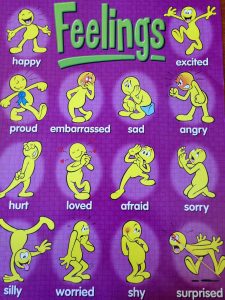As we learned in my last post Inner Compass: Your Feelings Point the Way, emotions can help us make choices by giving us a vital compass that tells us where to go and who to get involved with. If we follow the directions of our inner compass, then we can make choices that feel authentic, enthusiastic, and sustainable. But being guided by your feelings isn’t as easy as it sounds. First of all, we can’t choose our feelings. And secondly, those feelings often turn out to be childlike, animal-or at least mammal-istic. Because of that, I often refer to a person’s deepest feelings as their Inner Child.
But being guided by your feelings isn’t as easy as it sounds. First of all, we can’t choose our feelings. And secondly, those feelings often turn out to be childlike, animal-or at least mammal-istic. Because of that, I often refer to a person’s deepest feelings as their Inner Child.
Some people have trouble tuning into their inner feelings and some don’t. For most of us it is a skill we attain only with encouragement and practice. If you’re lucky, your parents nurtured your ability to identify and express how you feel from the very get-go. However, many baby boomers and gen-x-ers were brought up with the notion that nobody likes a complainer and have learned to simply put up and shut up. Other families may be more focused on economic survival or may urge their kids to follow religious guidelines. Parents are supposed to gradually let go, but some moms and dads never stop making choices for their kids. Many men and women trying to compete in a traditionally man’s world, dismiss feelings as soft and self-indulgent—and assume they are better off without them. Other people get overwhelmed by their emotions and all too quickly reach for a drink or drugs to dull them.
 If you are one of these passionless people and you want to be inspired by an inner compass, then you must learn to tune in. A quick look at these emoji figures may help you distinguish feelings from thoughts. Then, as you go about each day, pay attention to what you feel, with special attention to what you feel spontaneously and what you feel physically. The immediacy of a feeling shows that it is primary and genuine rather than wishful or secondary to a feeling that came before it. Physical sensations, like breaking out into a sweat, feeling aroused, tearing up, or feeling a lump in your throat, are like highlighters to your inner monologue. They show where your feelings run most deep and true.
If you are one of these passionless people and you want to be inspired by an inner compass, then you must learn to tune in. A quick look at these emoji figures may help you distinguish feelings from thoughts. Then, as you go about each day, pay attention to what you feel, with special attention to what you feel spontaneously and what you feel physically. The immediacy of a feeling shows that it is primary and genuine rather than wishful or secondary to a feeling that came before it. Physical sensations, like breaking out into a sweat, feeling aroused, tearing up, or feeling a lump in your throat, are like highlighters to your inner monologue. They show where your feelings run most deep and true.
When feelings become more a matter of hours than minutes, we call them moods. Take your moods seriously–good or bad–and ask questions, like When did I start feeling this way? and What was going on at that time?
Note well what you like to think about, read about, or do when you’re free to do anything. Watch where your mind roams when you’re relaxing or meditating. See what you’re drawn to, but also what you’re secretly dreading or seeming to avoid by any means possible. Men, in particular, may have to look at what they do or don’t do and reason back to their feelings.
Assume that nothing in your head is random. Ask why that particular song or movie scene sticks with you. Surely you’ve heard other songs recently. Why that one? Because it has meaning for you, meaning, because it expresses—or at least helps you handle—something that you feel strongly about. Maybe you’re trying to get over an ex? Or you’re feeling like a misfit or trying to break free from overprotective parents?
Loosen up your mind and see where it goes without judging yourself. Just notice and learn. If you can’t do this on your own, a meditation class can help. Watch how your consciousness jumps around. Why do certain memories come up for you at certain times. See how the child within you connects one thing to another. Dreams, too, are products of your mind. Jot them down. Ask yourself what feeling does this dream express or problem is it trying to solve.
Do a thought experiment. Picture what your life might look like after making a choice that you’re contemplating (like getting married, or divorced, or pursuing a new career) and imagine how you would feel.
Do a real experiment. If possible, make that choice for a day or a week and see how you feel. Or reach out and talk with people who have made similar choices. Might you feel the same?
A final technique for tuning in is to carry an old picture of yourself as a child in your wallet or smart phone. That little boy or girl, of course, still lives inside you, at the very heart of your emotions. Take out that picture and literally ask your inner child how he or she is feeling today. You may be surprised by what you hear.
In summary, our inner feelings tell us what we love, hate, are endlessly excited by, and what bores us to death. Master these techniques and you’ll feel much more capable of navigating your way through life’s many choices.
–Dr. Adam
